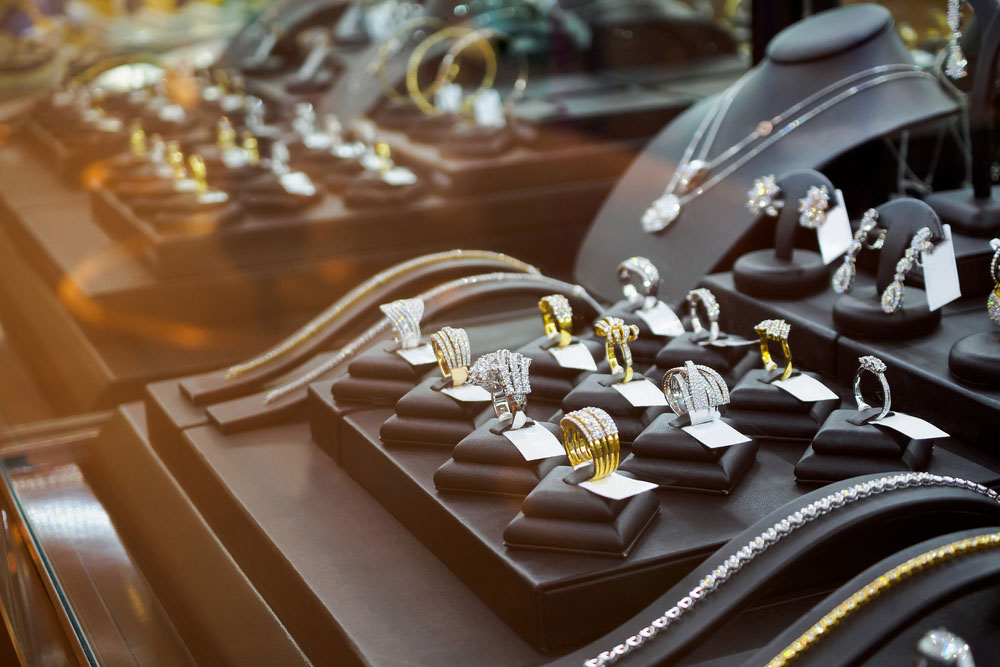
The jewelry industry is ever-evolving, influenced by shifts in fashion, technology, and consumer values. As trends come and go, one thing remains constant: the pursuit of elegance and sophistication. The latest updates in the jewelry world offer a glimpse into what the future holds, from cutting-edge technological innovations to the resurgence of timeless designs. Understanding these developments is essential for anyone with an interest in fine jewelry or for those simply looking to stay informed. Here, we explore the breaking news in the jewelry industry, highlighting the trends, innovations, and insights that are shaping the market today.
1. Sustainable Practices: Eco-Friendly Jewelry Takes Center Stage
As consumers grow increasingly conscious of their environmental impact, sustainable practices in the jewelry industry are gaining traction. Jewelry brands are embracing ethical sourcing, focusing on conflict-free diamonds, and utilizing recycled materials to minimize their carbon footprint. Moreover, advancements in lab-grown gemstones and diamonds have allowed for beautiful, high-quality alternatives to mined stones. These innovations not only appeal to eco-conscious buyers but also drive a new narrative in the jewelry industry: beauty can exist without compromising the planet.
2. The Rise of Lab-Grown Diamonds: A Modern Revolution
Lab-grown diamonds are no longer just a passing trend—they are here to stay. These diamonds are chemically identical to mined diamonds, but their environmental and ethical benefits have made them highly sought after. By replicating the natural conditions under which diamonds form, scientists have created stones that are indistinguishable from their earth-mined counterparts, all while reducing the negative impact on the environment. Lab-grown diamonds also come with a more accessible price tag, making luxury even more attainable. As these stones gain popularity, traditional jewelers are beginning to embrace them alongside their mined counterparts, offering consumers more choice and value.
3. Personalization: Jewelry as a Statement of Individuality
In today’s world, people are increasingly seeking items that reflect their personal tastes, beliefs, and experiences. Customization and personalization have emerged as powerful trends in the jewelry industry. From engraved initials to bespoke designs, jewelry is no longer just a commodity—it’s an expression of identity. Advanced technology, such as 3D printing and CAD (computer-aided design), has made it easier for consumers to create unique pieces that are tailored to their desires. Whether it’s a personalized necklace or a one-of-a-kind engagement ring, the demand for bespoke jewelry continues to rise.
4. Vintage and Retro Jewelry: The Revival of Timeless Elegance
While modern innovations are crucial, there’s a noticeable resurgence of interest in vintage and retro styles within the jewelry industry. The allure of older, classic designs is bringing an old-world charm back into vogue. Jewelry collectors are once again drawn to the elegance of mid-century and Art Deco-inspired pieces, where craftsmanship and design aesthetics are revered. In addition, sustainable-minded consumers are turning to pre-owned jewelry as a means of acquiring rare, high-quality items without contributing to the environmental damage caused by new mining. This demand for vintage and estate jewelry has sparked a boom in auctions, estate sales, and curated vintage collections.
5. Tech Meets Luxury: Smart Jewelry and Wearable Devices
The intersection of technology and luxury is another exciting development in the jewelry industry. Smart jewelry, once limited to discreet fitness trackers, has evolved into wearable devices that combine aesthetics with function. Today’s smart jewelry offers an array of features, including activity tracking, health monitoring, and even mobile notifications—all while maintaining the sophisticated appearance of fine jewelry. The fusion of high-tech functionality with traditional jewelry design represents a bold shift in consumer preferences, blurring the lines between fashion and tech. Brands like Oura and Fitbit have pioneered this movement, offering rings, bracelets, and necklaces that serve both as wearable tech and as statement pieces.
6. Colored Gemstones: A Bold Shift in Traditional Jewelry
While diamonds have long been the centerpiece of engagement rings and fine jewelry, colored gemstones are quickly gaining ground. From sapphires and rubies to emeralds and garnets, colored stones are being celebrated for their vibrancy, individuality, and symbolic meanings. The shift toward these gemstones has been driven by their ability to add a personal touch to jewelry, allowing wearers to choose stones that resonate with their unique stories. Jewelry designers are increasingly experimenting with bold color combinations and innovative settings, bringing a fresh and dynamic energy to the jewelry market.
7. Luxury Jewelry and Investment Pieces: A Safe Haven in Uncertain Times
In times of economic uncertainty, luxury jewelry has become more than just a symbol of wealth—it’s viewed as an investment. High-end jewelry pieces, especially those featuring rare gemstones and diamonds, are becoming increasingly popular as individuals seek to safeguard their wealth. In particular, limited-edition collections and heritage pieces are seeing rising demand as their value appreciates over time. As a tangible asset, jewelry provides not only a means of personal expression but also a potential financial return, making it an attractive option for savvy investors.
8. The Influence of Social Media and Celebrities on Jewelry Trends
The power of social media and celebrity endorsements cannot be overstated when it comes to shaping jewelry trends. Platforms like Instagram, TikTok, and Pinterest have transformed the way consumers discover and engage with jewelry brands. Influencers and celebrities have become the driving forces behind jewelry trends, showcasing new pieces to their massive audiences and fueling consumer demand. Whether it’s a dazzling diamond necklace worn by a Hollywood star or a personalized bracelet shared by an Instagram influencer, social media has made jewelry a prominent part of digital culture. As a result, jewelry designers are increasingly leveraging social platforms to promote their collections and connect with potential customers.
9. Sustainable Packaging: Eco-Conscious Jewelry Brands Lead the Way
As sustainability continues to gain importance in the jewelry industry, brands are extending their commitment to environmental responsibility beyond just the materials used in their products. Many jewelry companies are now focusing on eco-friendly packaging, utilizing recycled or biodegradable materials to minimize waste. The shift towards sustainable packaging reflects the growing consumer demand for businesses to take responsibility for their environmental impact. By prioritizing the entire lifecycle of their products, these companies are setting a new standard for eco-conscious luxury.
Conclusion: The Future of Jewelry
The jewelry industry is undergoing a profound transformation, driven by a combination of technological advancements, ethical considerations, and shifting consumer preferences. From the rise of lab-grown diamonds and sustainable practices to the influence of social media and the demand for personalization, these trends are shaping the future of fine jewelry. As the industry continues to evolve, one thing remains clear: jewelry will always be more than just an accessory—it will continue to be a timeless symbol of beauty, identity, and value. Staying informed about the latest developments ensures that consumers are empowered to make conscious, informed choices in their jewelry purchases, allowing them to embrace the future of luxury while honoring the past.
